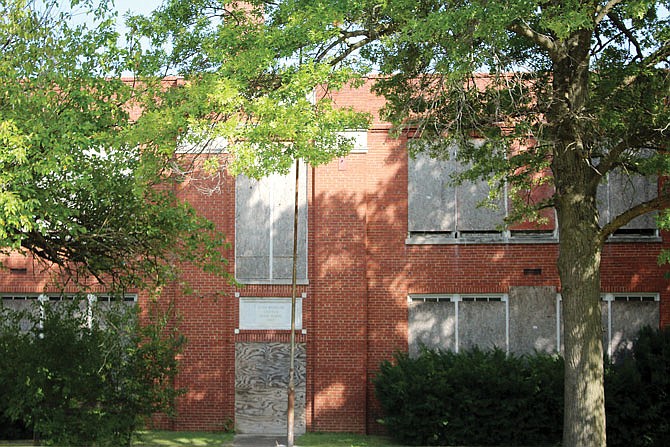Westminster College's Hancock Symposium closed Wednesday evening with a discussion of two local locations with ties to famous visitors - George Washington Carver and Winston Churchill.
Carmen Brandt, of the George Washington Carver Cultural Center Board, Carver graduate Victor B. Pasley, and State Historical Society of Missouri Executive Director Gary Kramer spoke.
George Washington Carver was one of the most well-named Black men of his era. In 1937, when a school in Fulton was named after him, he traveled to the dedication in person. Brandt's uncle escorted Carver to the boarding house where he stayed.
The George Washington Carver School still stands in Fulton.
Two blocks away, another monument which was brought to Fulton to commemorate Churchill's visit Westminster College to give his famous "Iron Curtain" speech - the St. Mary the Virgin, Aldermanbury church.
"They are a reminder to all of us of a people's resilience and resourcefulness," Kramer said.
The church is well-preserved, but the school hasn't received as much attention and care over the years.
"What we're here tonight to do is to look really more deeply at these two buildings honoring them in some way," America's National Churchill Museum curator Timothy Riley said.
The discussion was focused on exploring the legacy of George Washington Carver School, as well as a vision for the future.
Brandt and Pasley attended the school, which educated students through eighth grade.
"Like over 1,000 African American students who came before me, I have wonderful memories of my time at Carver School," Pasley said. "Because of segregation of education in Missouri and around the nation, it was my only choice at the elementary level."
Pasley lived through desegregation and went on to attend Fulton High School. If it hadn't been for the Supreme Court decision Brown vs. Board of Education, Pasley would have had to travel to Jefferson City to attend high school after graduating from Carver.
"Like the churches in the African American community, Carver School was the center of a variety of activities," he said. "Typical of neighborhood schools, our teachers were our trusted neighbors, and they took special interest in us and our families."
Pasley spoke of clubs and activities, theater productions, concerts and field trips. Brandt spoke of efforts to restore the school to a community center.
"For decades, that building has sat empty, idle," Brandt said. "Windows broken; we boarded the windows up. Trash on the ground, debris everywhere, and even now, the shrubs are growing again up to the window sill. That's the Carver School we see now."
In 2014, community members began talking about what to do about the school. The culture center group formed, and in 2016, it obtained the deed to the land and was set up as a nonprofit. The group cleaned up the outside but found the inside of the building was in poor shape.
"During that work time, there was sense of unity, and there was a sense of pride," Brandt said. "As Victor (Pasley) talked about, this was a building where not only you went to school but your family was a part of it."
Currently, the group is looking for funding and support.
Kramer noted many of the people who remember Carver school are older.
"The first challenge it seems to me is to rekindle in the hearts and souls of minds of younger people what this school meant," Kramer said.
Pasley hoped listeners might be inspired to join the effort. The speakers spoke of collecting history and engaging today's students. Kramer said the historical society could help resources on oral history collection.
"We need people who are interested - people who want to support our goals," Brandt said. "We need local and state people, we need people who just want to come by and say, 'how can we help.'"

